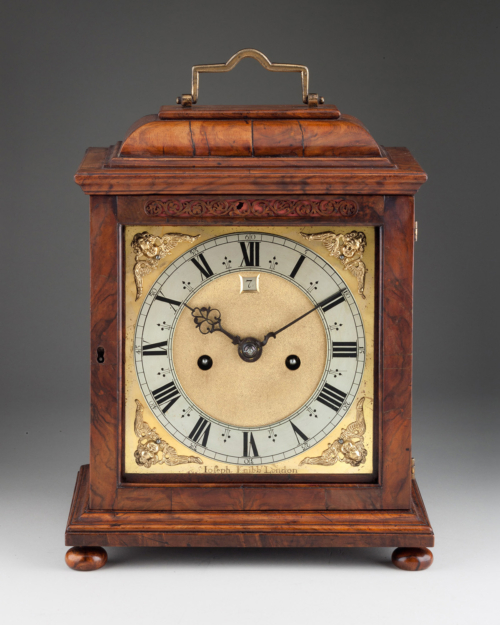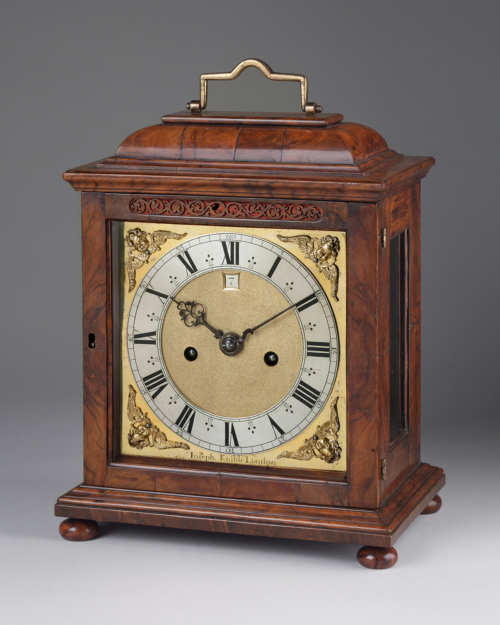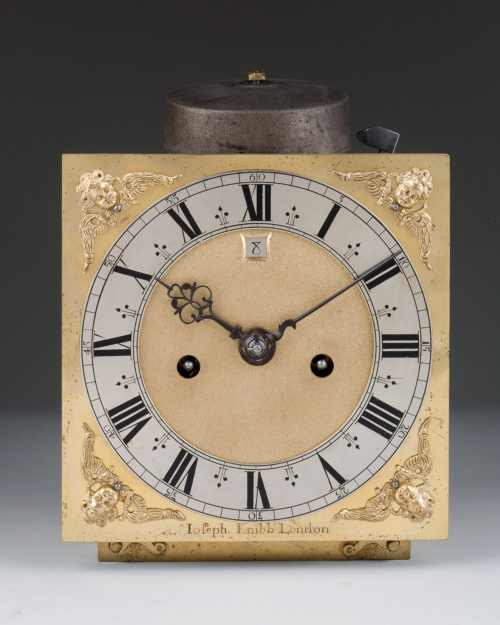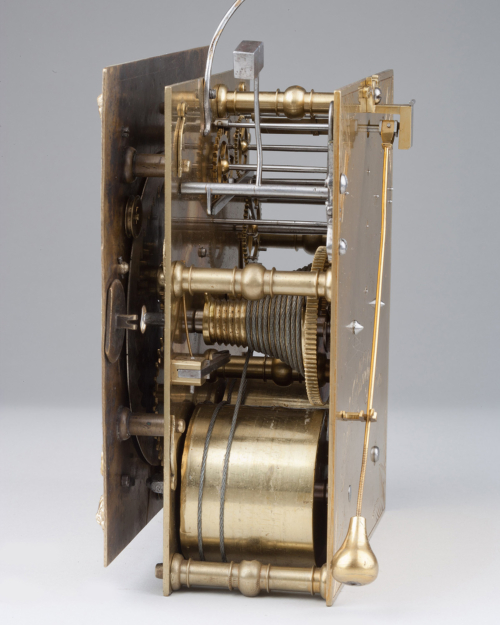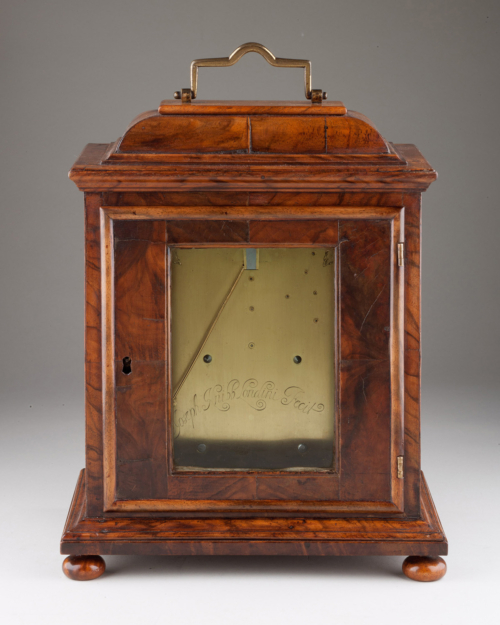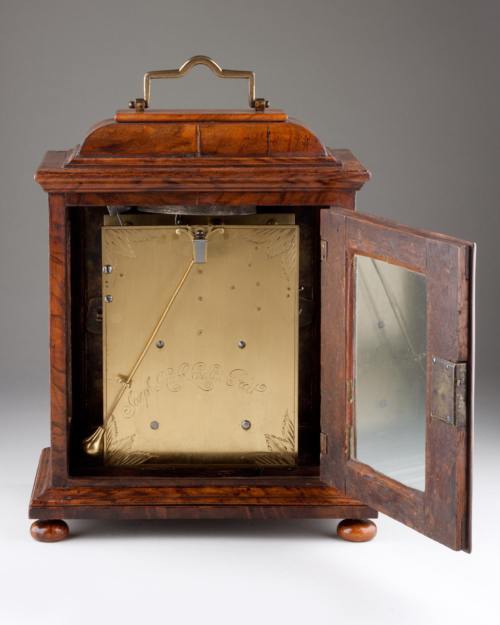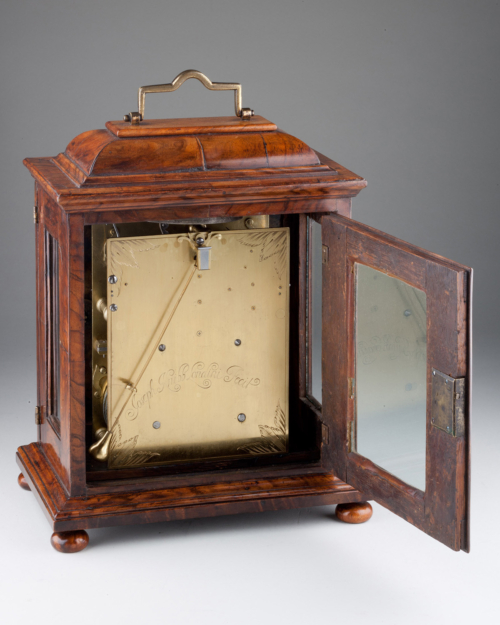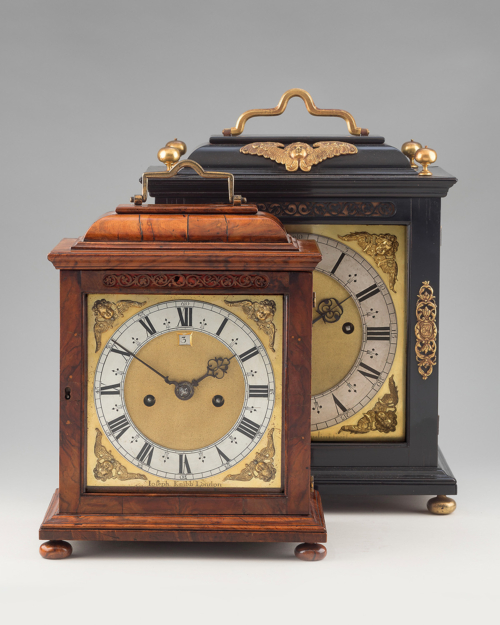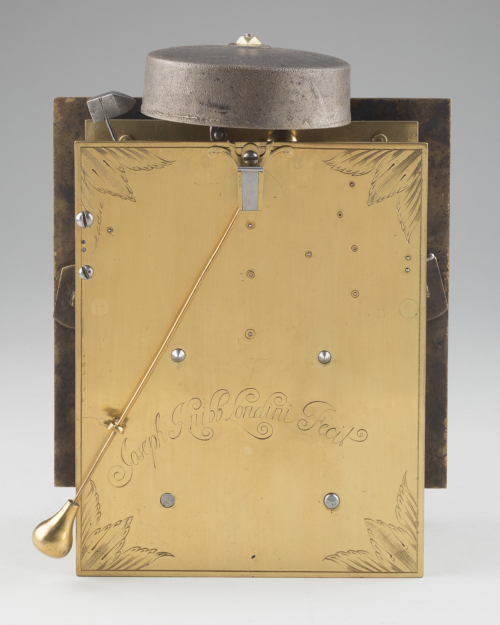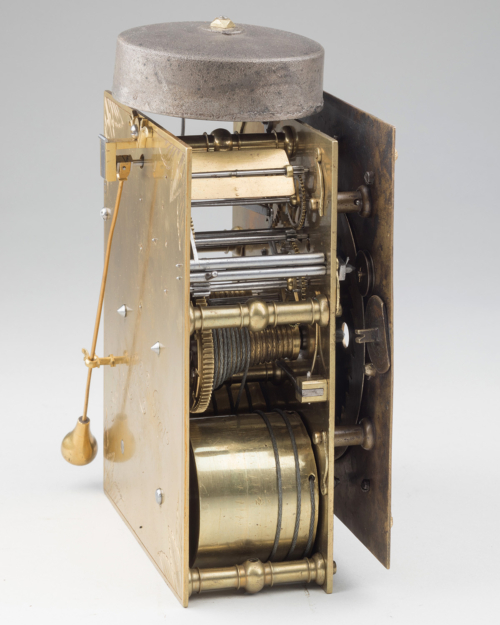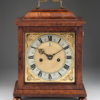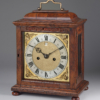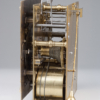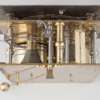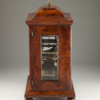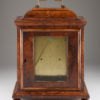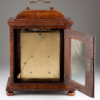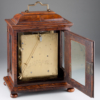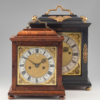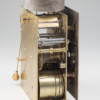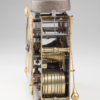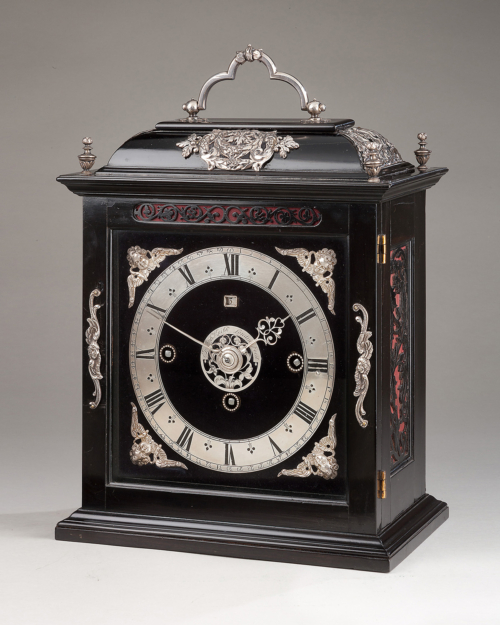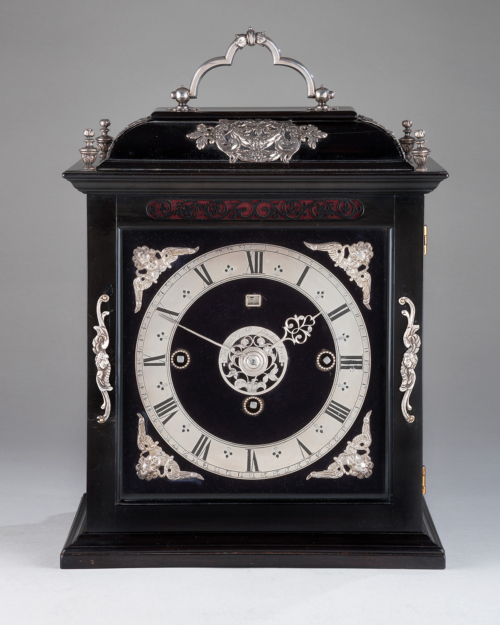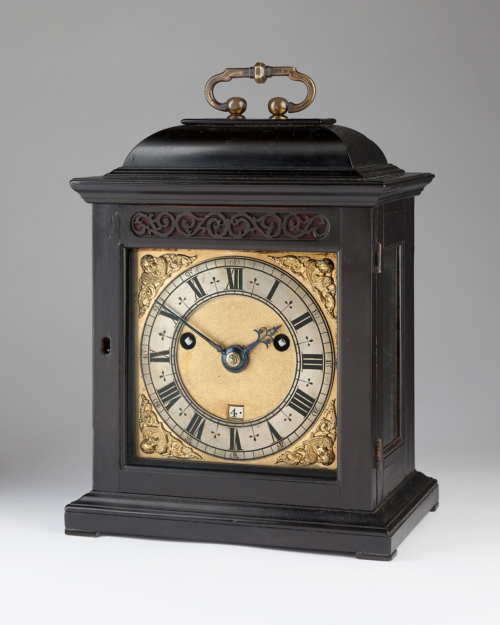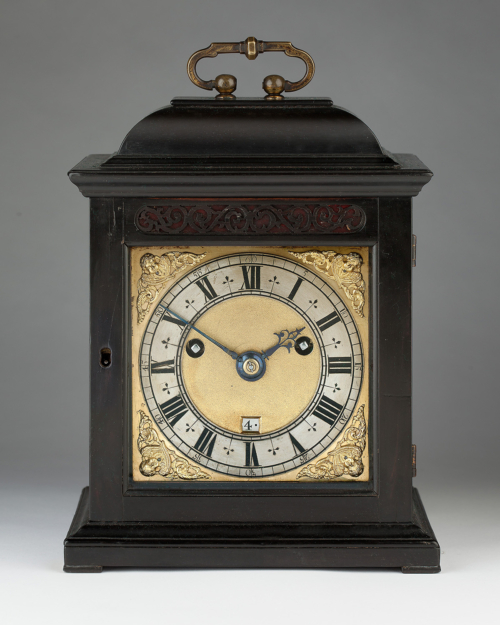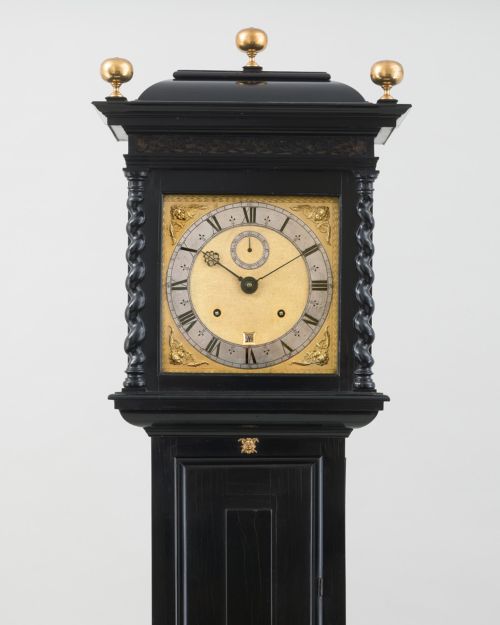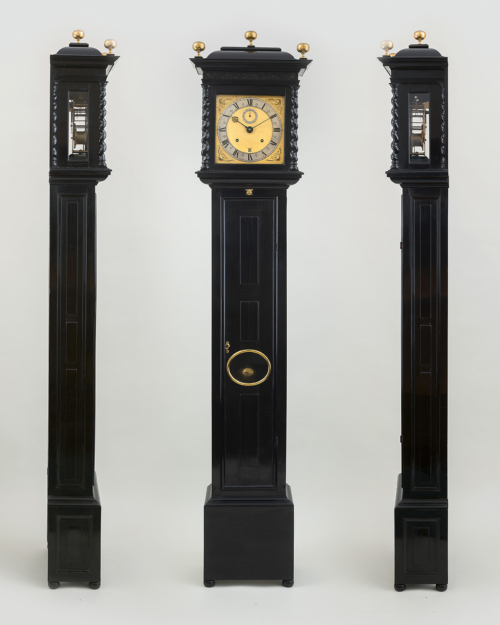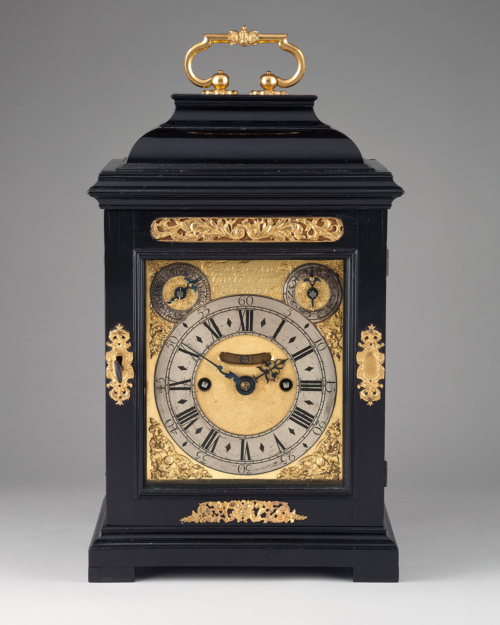| Stock No. | Exhibit No.9 |
| Height | 11½ inches |
| Case | The typical Phase I case, veneered in figured-walnut onto an oak carcass, surmounted by a gilt-brass ‘cranked’ lifting handle above the shallow cushion-moulded moulded top. The flat-top main mouldings above the front door with inset walnut fret and glazed side apertures, the similarly glazed rear door with D-end frame mouldings. The figured main moulding to the base raised on four walnut bun feet. |
| Dial | The 6¾ inch square gilt-brass dial is signed Joseph Knibb London beneath the silvered chapter ring which is engraved with Roman hour and Arabic five-minute numerals, trident half-hour markers. The very finely matted centre has two winding holes and a calendar aperture beneath XII. The blued-steel hands are particularly fine and delicate. The corners are applied with finely chased fire-gilded winged-cherub spandrels of Knibb’s early design. |
| Movement | The delicate plates are held by six latched finned baluster pillars, with further latches to the four dial feet, the twin fusees and spring barrels currently have wire lines. The tic-tac escapement re-instated, and operating on a knife-edge with a short bob pendulum. The strike train governed by an inside countwheel and sounding on the ‘pork-pie’ bell mounted above. The typically plain backplate having a line border and early foliate corners, signed in Latin in an arc Joseph Knibb Londini fecit. The movement is secured to the case by means of steel bolts into the base pillars and archetypal dial turn-catches. |
| Provenance | The Time Museum, Rockford, Illinois, USA, inventory no. 1124; Sotheby’s New York, 19 June 2002, Masterpieces from the Time Museum, Part II, lot 163; Private collection, Cheshire, until sold 2015; Private collection, UK. |
| Comparative Literature | Lee, The Knibb Family Clockmakers, 1964, pages 98 & 108; Dawson, Drover & Parkes, Early English Clocks, 1982, page 140. |
| Literature | Attwood and Andrewes, The Time Museum, an Introduction, Rockford, 1983. p.10. |
| Dimensions | Height 11½ inches; width 9½ inches; depth 6½ inches |
| Exhibited | The Time Museum, Rockford, Illinois, USA. |
| Notes | Joseph Knibb’s Phase I spring clocks were the first made to his own specific design. Only 22 are currently known, the vast majority in ebony, and all were probably produced within eight years of him setting up his business in London in c.1670. By the latter part of the 1670s, Knibb started to evolve his spring clocks making them smaller; the first Phase II example was dated 1677, and marked a shift away from this earlier style. In the 75 years between 1948 and 2023 over 180 table clocks by Joseph Knibb have been recorded sold, either at auction or privately. Of those clocks, 166 had ebony-veneered or ebonised cases, but only 14 were veneered with walnut. |
- Sorry, this product cannot be purchased.
Joseph Knibb, London, circa 1675
A rare and unusually small Charles II figured walnut Phase I striking table clock with tic-tac escapement
£225,000
Additional information
| Dimensions | 5827373 cm |
|---|

